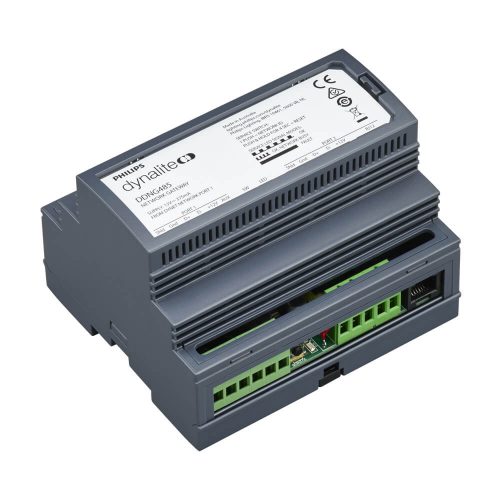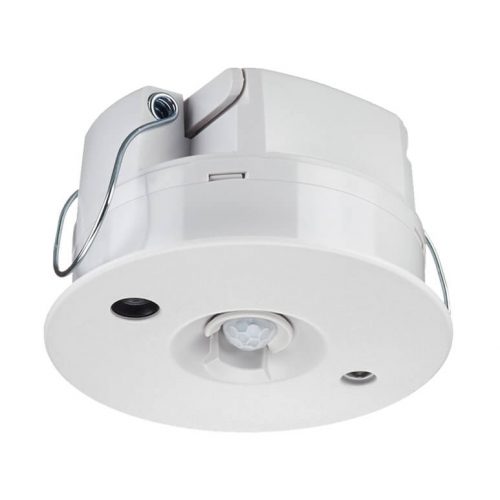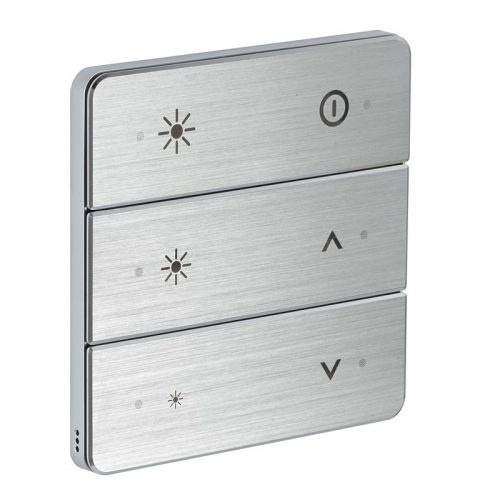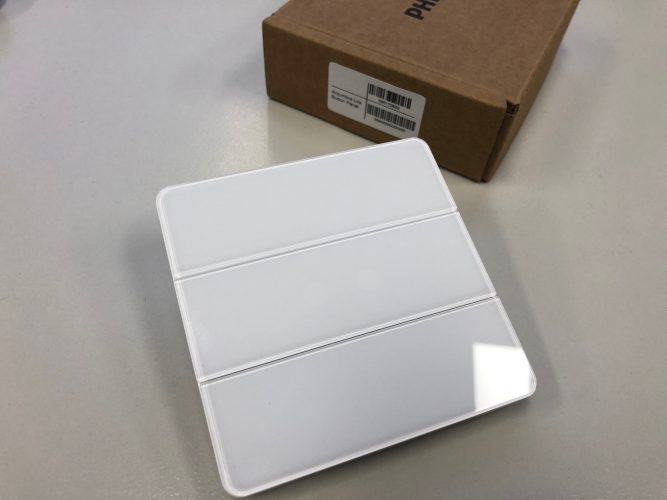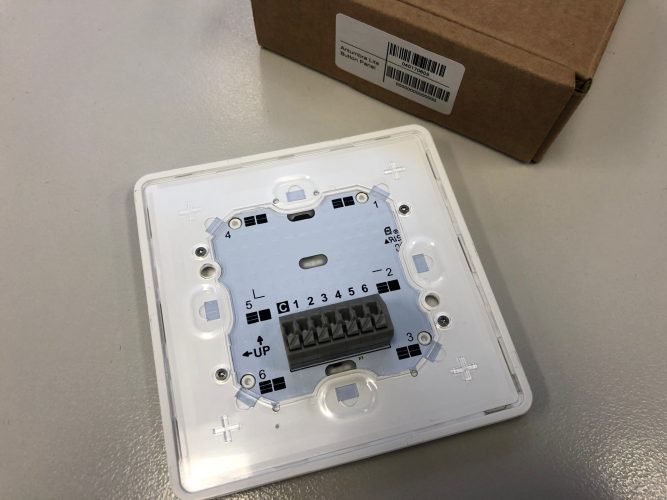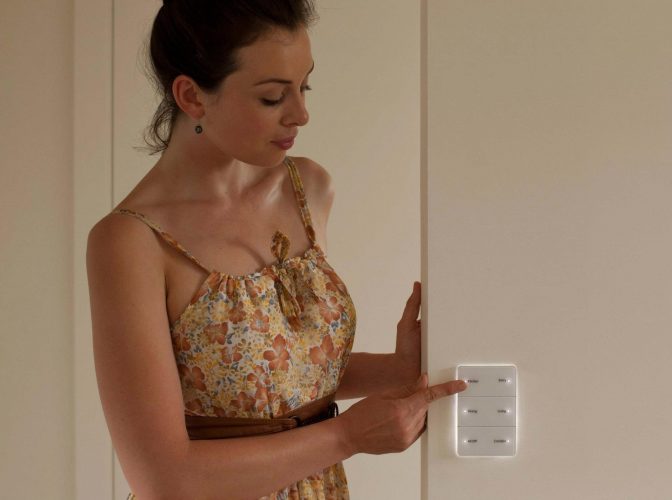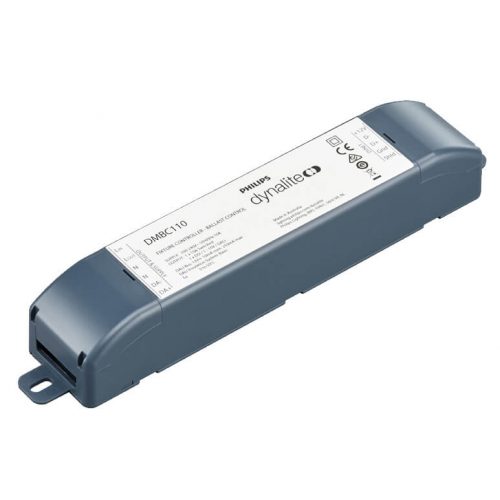With LED strip lights being more popular, there are different ways to control them, and there may be better ways for you to control them.
LED strip lights are one of many different types of lights that are specified and installed into a home. Most lighting control systems will be a hybrid solution, needing to control different types of loads using multiple control methods.
In this edition of ‘Getting to know’ we explore the popular methods of control LED strip lights:
- Relay switching
- 1-10V
- DALI Broadcast
- DALI Address
Relay Switching
For specifications that may require on/off switched lights, each locally installed LED driver is home-run to the distribution board and typically controlled by a relay controller such as the Philips Dynalite DDRC1220 feed through relay controller.
For residential projects, all LED lights should be controlled to their optimal potential – including LED strip lights. With many LED strip lights now being 24V powered, they are often too bright at 100% lumen output, particularly at night especially where intelligent evening and night presets should be implemented.
I recommend better control methods for controlling LED strip lights that will provide greater usability and the best comfort levels for home owners and residents.
1-10V
For analogue or 1-10V lighting control systems, the load controller transmits a low voltage signal: 1V equates to 0 per cent of lighting output; 10V equates to 100 per cent output. All fittings within a single channel (lighting group) will respond to this dimming instruction at the same time.
For 1-10V systems, the electrician is to home-run wire a separate 2-core 240V rated double insulated cable (1.5mm twin active or similar) for the control signal of each lighting channel. Power to the light is supplied directly from a relay controller (not the Philips Dynalite signal controller), to ensure lights can be switched off.
1-10V lights can be controlled by a Philips Dynalite DDBC1200 signal controller or DDMC802 multipurpose modular controller configured with DGBM200 ballast modules. A relay controller (such as a DDRC1220) should be provided to ensure that lights are switched off.
With higher powered LED strip lights now most common, providing much brighter output, 1-10V may not provide the most comfortable outcome. Many 1-10V lighting control applications can be specified with DALI control for better performance and flexibility.
DALI Broadcast
For many integrators, a DALI Broadcast system may be their first DALI experience, as a progression from relay and 1-10V lighting control of LED strip lights.
With DALI Broadcast systems, all lights within a single channel (lighting group) will respond at the same time.
Similar 1-10V systems, for DALI Broadcast systems the electrician needs to home-run a separate 2-core 240V rated double insulated cable (1.5mm twin active or similar) to the distribution board for the control signal of each lighting channel. Luminaire power is supplied directly from the circuit breaker (not the Philips Dynalite signal controller).
DALI Broadcast controlled lights can be controlled by a Philips Dynalite DDBC1200 signal controller or DDMC802 multipurpose modular controller configured with DGBM200 ballast modules. The DALI Broadcast control protocol is determined within the Dynalite commissioning and programming software.
DALI Address
The choice to move towards a full DALI address system can be complex and will need involvement with the lighting design and specification to ensure compatible light fittings and drivers. Further documentation and education may need to be provided to the electrician and builder to ensure the right cabling methodology is implemented.
The DDBC120-DALI is my signal controller of choice for full DALI residential projects because of it’s features and flexibility. Being DALI-2 certified, the DDBC120-DALI can control DALI 209 type light fittings for tunable white lighting control (human centric lighting), and has a self-healing feature that will automatically re-address a replacement fitting if one fails.
For DALI Address systems, the electrician will need to run a separate 2-core 240V rated double insulated cable (1.5mm twin active or similar) for the control signal, with a maximum of 64 points per DALI universe. Luminaire power is supplied directly from the circuit breaker (not the Philips Dynalite signal controller).
More options
In addition to the popular control methods mentioned above (relay switching, 1-10V, DALI Broadcast, and DALI Address), there are other ways to control LED strip lights including PWM and DMX control, for special applications.
There are also different Dynalite products that control the various control protocols, depending on the application and installation requirements.
I would love to know your thoughts about controlling LED strip lights and DALI control for residential projects. We foresee more residential projects implementing more DALI, particularly as the new DALI-2 standard becomes more known.
Articles from my Dynalite page focuses on the Philips Dynalite networked lighting control system. Many industry professionals regard Philips Dynalite as being the world’s best lighting control system, that I have represented with Lightmoves for many years. SimonLakey

